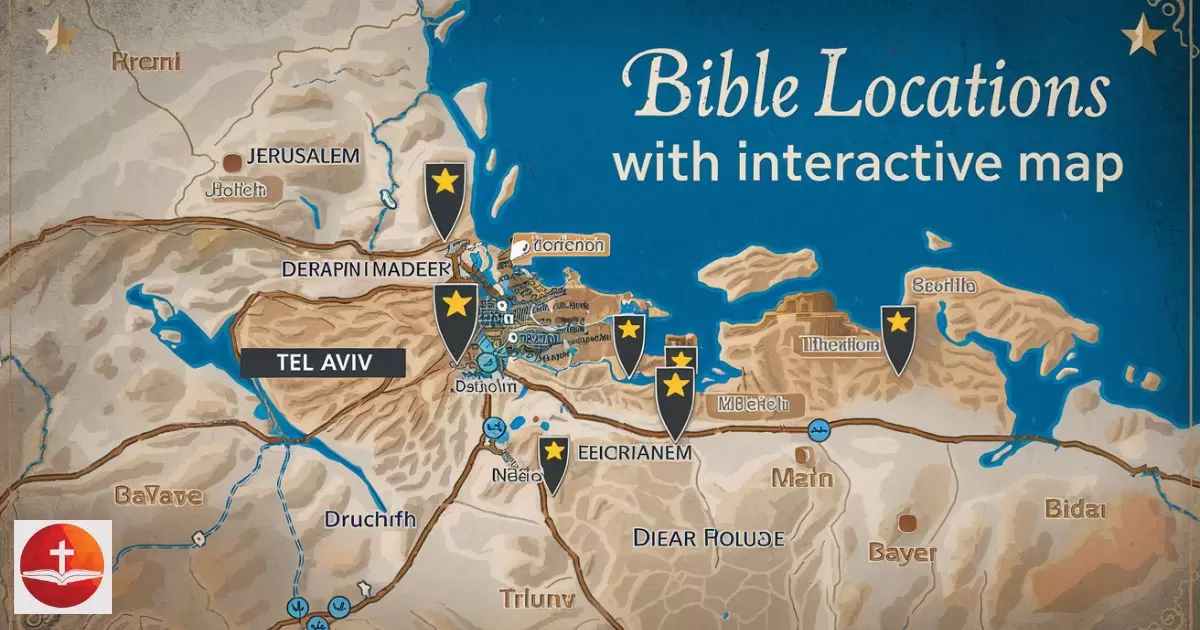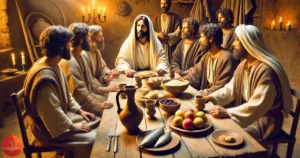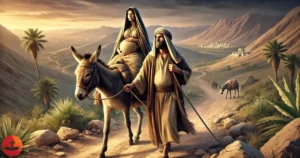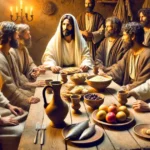“The Rich Tapestry of Biblical Geography: An Interactive Exploration”
Exploring Biblical geography offers a profound understanding of the contexts in which ancient events unfolded. Using interactive maps, we can visualize the locations mentioned in the Bible, enhancing our grasp of the historical and spiritual significance of these places.
This article delves into key biblical locations and how interactive maps can enrich our study of Scripture.
1. Jerusalem: The Heart of Biblical History
Jerusalem is central to many biblical narratives, from King David’s reign to Jesus’ crucifixion.
- Jerusalem’s significance is highlighted in various Biblical events, such as David establishing it as the capital of Israel. The city’s temples and historical events make it a focal point for understanding Biblical history.
- Interactive maps allow users to explore ancient Jerusalem’s layout, including the Temple Mount and significant landmarks like the Western Wall.
Example: The interactive map of Jerusalem can show the locations of key events like Solomon’s Temple and the Upper Room where Jesus shared the Last Supper.
Scripture Reference: “But the LORD chose Jerusalem, that his name might be there.” – 2 Chronicles 6:6
2. Bethlehem: The Birthplace of Jesus
Bethlehem is renowned as the birthplace of Jesus, a significant event in Christian theology.
- Bethlehem’s role is pivotal in the nativity story. The city’s mention in the New Testament underscores its importance in fulfilling Old Testament prophecy about the Messiah’s birthplace.
- Interactive maps can illustrate Bethlehem’s location relative to other significant places like Jerusalem, providing a spatial understanding of the journey Mary and Joseph took.
Example: An interactive map can trace the journey from Nazareth to Bethlehem, illustrating the route taken by Mary and Joseph.
Scripture Reference: “But thou, Bethlehem Ephrathah, though thou be little among the thousands of Judah, yet out of thee shall he come forth unto me that is to be ruler in Israel.” – Micah 5:2
3. Nazareth: The Early Life of Jesus

Nazareth, the town where Jesus grew up, plays a crucial role in understanding His early years.
- Nazareth’s historical context reveals the environment where Jesus lived and grew. This location is important for understanding Jesus’ background and the fulfillment of prophecy.
- Interactive maps can show Nazareth’s geographical position in relation to other key locations like Capernaum and Jerusalem.
Example: The map can highlight significant landmarks in Nazareth, such as the Church of the Annunciation and the possible home of Jesus.
Scripture Reference: “And he came and dwelt in a city called Nazareth: that it might be fulfilled which was spoken by the prophets, He shall be called a Nazarene.” – Matthew 2:23
4. Jericho: The Battle of Jericho
Jericho is famous for its walls falling after the Israelites’ march, a pivotal event in the conquest of Canaan.
- Jericho’s significance in the Bible is marked by the miraculous collapse of its walls. This event demonstrates God’s power and the importance of faith in achieving divine promises.
- Interactive maps can provide views of ancient Jericho and its surrounding area, helping to visualize the conquest and strategic importance of this location.
Example: An interactive map might show the route taken by the Israelites around Jericho and the locations of archaeological findings related to the city’s fortifications.
Scripture Reference: “So the people shouted when the priests blew with the trumpets: and it came to pass, when the people heard the sound of the trumpet, and the people shouted with a great shout, that the wall fell down flat.” – Joshua 6:20
5. Mount Sinai: The Giving of the Law

Mount Sinai is renowned as the site where Moses received the Ten Commandments.
- Mount Sinai’s role in the Bible is central to the covenant between God and the Israelites. It represents a pivotal moment of divine revelation and lawgiving.
- Interactive maps can help locate Mount Sinai and compare it with other key locations in the Sinai Peninsula, providing context to its geographical and spiritual significance.
Example: A map can illustrate the potential locations of Mount Sinai and the route the Israelites took from Egypt to the mountain.
Scripture Reference: “And the LORD said unto Moses, Lo, I come unto thee in a thick cloud, that the people may hear when I speak with thee, and believe thee forever.” – Exodus 19:9
6. The Dead Sea: A Unique Biblical Landmark
The Dead Sea, mentioned in the Bible, is known for its unique features and historical importance.
- The Dead Sea’s mention in the Bible highlights its role as a geographical and symbolic location. It is associated with stories of Sodom and Gomorrah and the region’s extreme conditions.
- Interactive maps can provide views of the Dead Sea’s surroundings and its significance in biblical narratives and modern geography.
Example: An interactive map can show the geographical features of the Dead Sea, including its proximity to ancient sites like Qumran.
Scripture Reference: “And the LORD rained upon Sodom and upon Gomorrah brimstone and fire from the LORD out of heaven.” – Genesis 19:24
Prayers for Anger: Seeking Peace and Resolution
7. Capernaum: The Ministry of Jesus
Capernaum was a central location for Jesus’ ministry, serving as a base for His teachings and miracles.
- Capernaum’s role in the New Testament includes various miracles performed by Jesus. It is often referred to as Jesus’ home during His ministry in Galilee.
- Interactive maps can display Capernaum’s location along the Sea of Galilee and key sites such as Peter’s house and the synagogue.
Example: A map might show the locations of significant events in Capernaum, such as Jesus healing the centurion’s servant.
Scripture Reference: “And leaving Nazareth, he came and dwelt in Capernaum, which is upon the sea coast, in the borders of Zabulon and Nephthalim.” – Matthew 4:13
8. Mount Carmel: The Contest with the Prophets of Baal
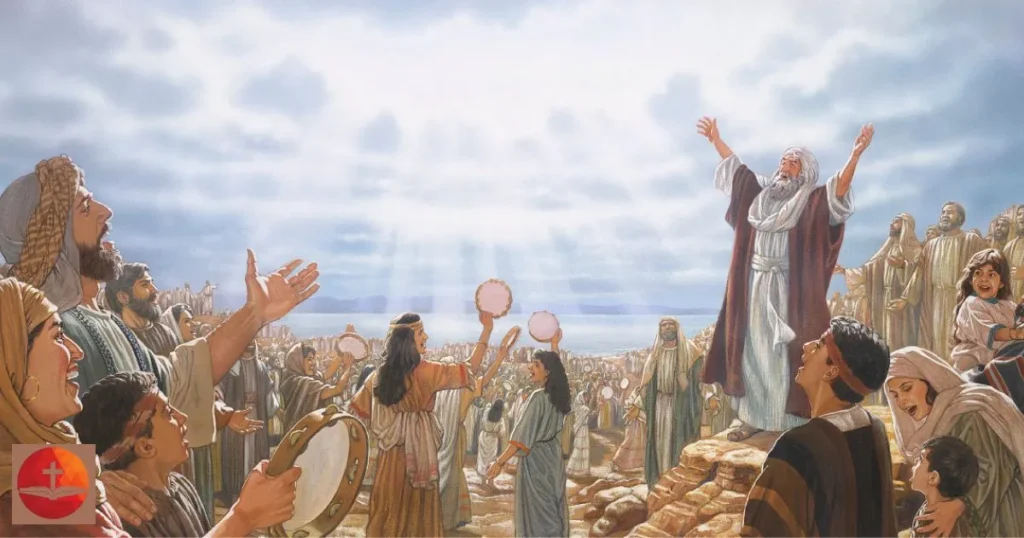
Mount Carmel is known for the dramatic confrontation between Elijah and the prophets of Baal.
- Mount Carmel’s significance is highlighted by Elijah’s challenge to the prophets of Baal, demonstrating God’s power and faithfulness.
- Interactive maps can offer a view of Mount Carmel and the surrounding region, providing context for this dramatic Biblical event.
Example: An interactive map can show the location of Mount Carmel in relation to other significant locations in the region, such as Samaria.
Scripture Reference: “And it came to pass at noon, that Elijah mocked them, and said, Cry aloud: for he is a god; either he is talking, or he is pursuing, or he is in a journey, or peradventure he sleepeth, and must be awaked.” – 1 Kings 18:27
9. The Jordan River: A Site of Spiritual Significance
The Jordan River is significant for various Biblical events, including the Israelites’ crossing into the Promised Land and Jesus’ baptism.
- The Jordan River’s role in the Bible is central to key events. Its crossing by the Israelites signifies the entrance into the Promised Land, and Jesus’ baptism marks the beginning of His ministry.
- Interactive maps can illustrate the river’s path and important sites along it, such as the place where John baptized Jesus.
Example: A map can trace the journey of the Israelites as they crossed the Jordan River into Canaan and the site of Jesus’ baptism.
Scripture Reference: “And John bare record, saying, I saw the Spirit descending from heaven like a dove, and it abode upon him.” – John 1:32
10. Hebron: The Burial Site of the Patriarchs
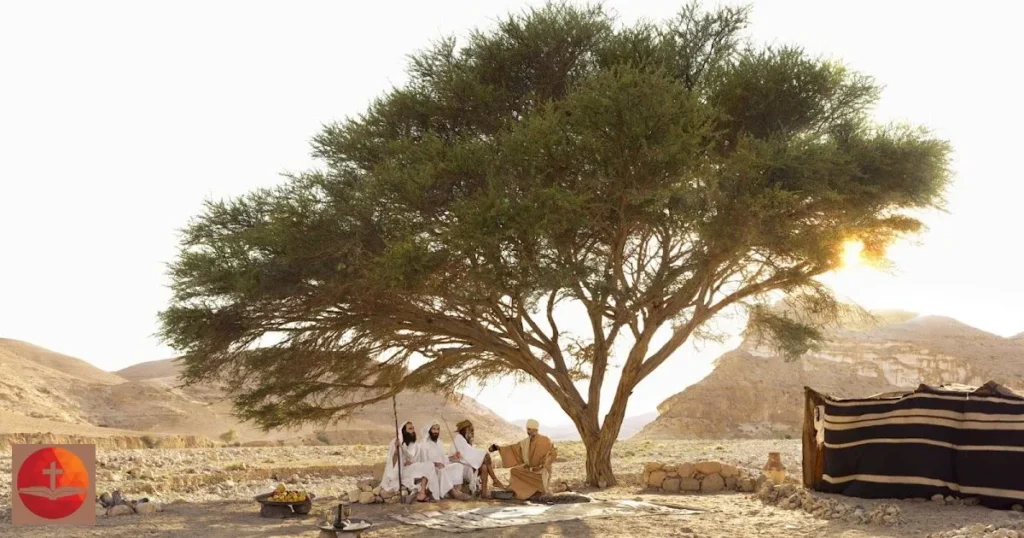
Hebron is notable as the burial site of Abraham, Isaac, and Jacob, key figures in Biblical history.
- Hebron’s importance is tied to its role as the resting place for the patriarchs. This location underscores the covenant made with Abraham and the significance of the land to the Israelites.
- Interactive maps can highlight the location of the Cave of Machpelah and its historical and religious significance.
Example: A map can show Hebron’s location relative to other ancient cities and its role in the lives of the patriarchs.
Scripture Reference: “And Abraham was old, and well stricken in age: and the LORD had blessed Abraham in all things.” – Genesis 24:1
11. Shiloh: The Location of the Tabernacle
Shiloh was the site where the Tabernacle was set up before the establishment of the Temple in Jerusalem.
- Shiloh’s significance is marked by its role as the religious center before the Temple was built. It was where the Ark of the Covenant was kept for many years.
- Interactive maps can show Shiloh’s location and the layout of the Tabernacle, offering insight into its historical and religious context.
Example: A map can display the ancient location of Shiloh and the movements of the Ark of the Covenant.
Scripture Reference: “And the whole congregation of the children of Israel assembled together at Shiloh, and set up the tabernacle of the congregation there.” – Joshua 18:1
12. Ai: The Conquest and the Curse
Ai is known for its dramatic capture by Joshua and the subsequent curse placed on the city.
- The conquest of Ai is a significant event in the Israelites’ journey to conquer Canaan. The initial defeat and eventual victory highlight themes of obedience and divine intervention.
- Interactive maps can provide a view of Ai’s location and its strategic importance during the conquest.
Example: A map can show the strategic approach taken by Joshua to capture Ai and the surrounding topography.
Scripture Reference: “And the LORD said unto Joshua, Fear not, neither be thou dismayed: take all the people of war with thee, and arise, go up to Ai: see, I have given into thy hand the king of Ai, and his people, and his city, and his land.” – Joshua 8:1
13. Bethany: The Home of Lazarus

Bethany, near Jerusalem, is known as the home of Lazarus, whom Jesus raised from the dead.
- Bethany’s role in the New Testament includes the miracle of Lazarus’ resurrection. This event demonstrates Jesus’ power over death and His compassion for His friends.
- Interactive maps can locate Bethany and its proximity to Jerusalem, providing context for the miracle performed there.
Example: A map can illustrate the distance between Bethany and Jerusalem, highlighting the journey Jesus took to perform the miracle.
Scripture Reference: “Jesus said unto her, I am the resurrection, and the life: he that believeth in me, though he were dead, yet shall he live.” – John 11:25
14. Dan: The Northern Boundary of Israel
Dan is significant as the northernmost boundary of the ancient kingdom of Israel and a site of historical and religious importance.
- Dan’s role includes its place as a city of refuge and a significant tribal allocation. Its mention in the Bible highlights the geographic and tribal divisions of Israel.
- Interactive maps can reveal Dan’s location and its relation to other tribal territories and historical events.
Example: A map can show the location of Dan and its role in the northern boundary of the Israelite territory.
Scripture Reference: “And the coast of the children of Dan went out too little for them: therefore the children of Dan went up to fight against Leshem, and took it, and smote it with the edge of the sword, and possessed it, and dwelt therein.” – Joshua 19:47
15. The Sea of Galilee: A Hub of Jesus’ Ministry
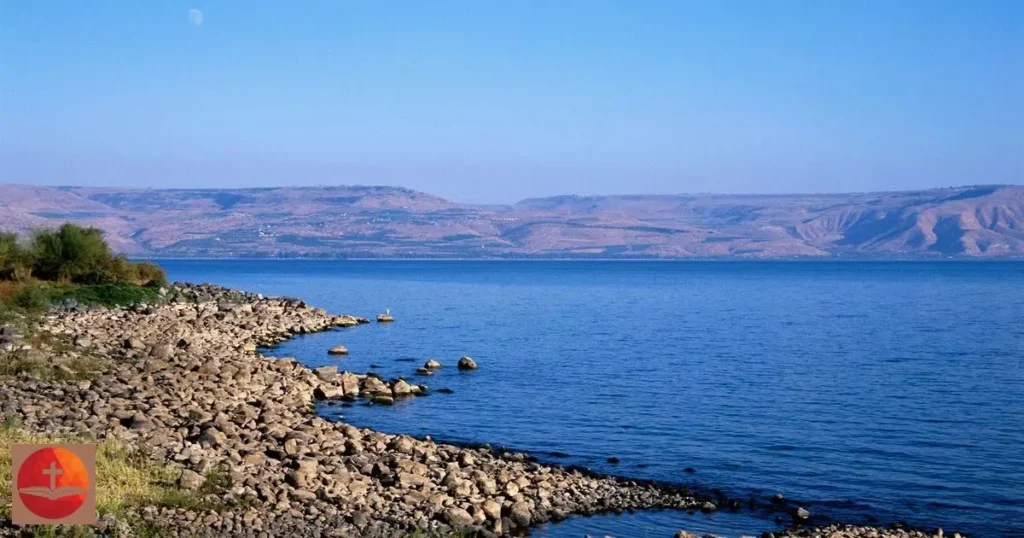
The Sea of Galilee is a central location for many of Jesus’ miracles and teachings.
- The Sea of Galilee’s significance is evident in numerous Gospel accounts. It was the setting for many of Jesus’ teachings and miracles, such as walking on water and calming the storm.
- Interactive maps can show the Sea of Galilee’s surroundings and key locations of Jesus’ ministry, such as the Mount of Beatitudes.
Example: A map can highlight significant locations around the Sea of Galilee, including where Jesus performed miracles and delivered sermons.
Scripture Reference: “And straightway Jesus constrained his disciples to get into a ship, and to go before him unto the other side, while he sent the multitudes away.” – Matthew 14:22
Key Bible Locations and Their Modern-Day Significance with Interactive Maps
| Bible Location | Description | Significance | Modern-Day Location | Link to Interactive Map |
|---|---|---|---|---|
| Jerusalem | Ancient city central to biblical history, including the crucifixion and resurrection of Jesus. | Considered a holy city in Christianity, Judaism, and Islam. | Jerusalem, Israel | Interactive Map of Jerusalem |
| Nazareth | The hometown of Jesus, where he grew up and began his ministry. | Significant as the place where Jesus spent his early years and where the Annunciation took place. | Nazareth, Israel | Interactive Map of Nazareth |
| Bethlehem | Birthplace of Jesus, often associated with the nativity story in the Bible. | Known as the birthplace of Jesus Christ, a central event in Christian belief. | Bethlehem, West Bank | Interactive Map of Bethlehem |
| Mount Sinai | The mountain where Moses received the Ten Commandments from God. | A pivotal location in biblical history, especially in the story of the Exodus and God’s covenant with Israel. | Sinai Peninsula, Egypt | Interactive Map of Mount Sinai |
| Capernaum | A key location in Jesus’ ministry, where he performed many miracles and taught in the synagogue. | Recognized as one of the main hubs of Jesus’ public ministry. | Capernaum, near the Sea of Galilee, Israel | Interactive Map of Capernaum |
Answers To Key Questions.
1. How can interactive maps help in studying Biblical geography?
Interactive maps provide a visual representation of Biblical locations, helping to understand the context and layout of significant events.
2. Which Biblical location is known for the Battle of Jericho?
Jericho, located in the Jordan Valley, is known for the fall of its walls after the Israelites’ march.
3. What is the significance of Mount Sinai in the Bible?
Mount Sinai is where Moses received the Ten Commandments from God, marking a key moment in the covenant between God and Israel.
4. Why is Bethlehem important in Christian tradition?
Bethlehem is the birthplace of Jesus, fulfilling Old Testament prophecies about the Messiah’s arrival.
5. How does the Sea of Galilee feature in Jesus’ ministry?
The Sea of Galilee is the setting for many of Jesus’ miracles and teachings, including walking on water and calming storms.
6. What role does Capernaum play in the New Testament?
Capernaum was a major center for Jesus’ ministry and a location for many of His miracles and teachings.
Conclusion
Exploring Biblical geography through interactive maps offers a dynamic way to engage with Scripture. By visualizing the locations where significant events occurred, we gain a deeper appreciation of their historical and spiritual contexts.
This interactive approach enhances our understanding and connection to the rich tapestry of Biblical history.

Hi! I’m Jane Austen, a writer passionate about exploring the stories and teachings of the Bible. On my website, BiblePulze, I share insights and reflections to help readers deepen their understanding of the Bible and its relevance to our lives today. I strive to make biblical teachings accessible and engaging for everyone.
